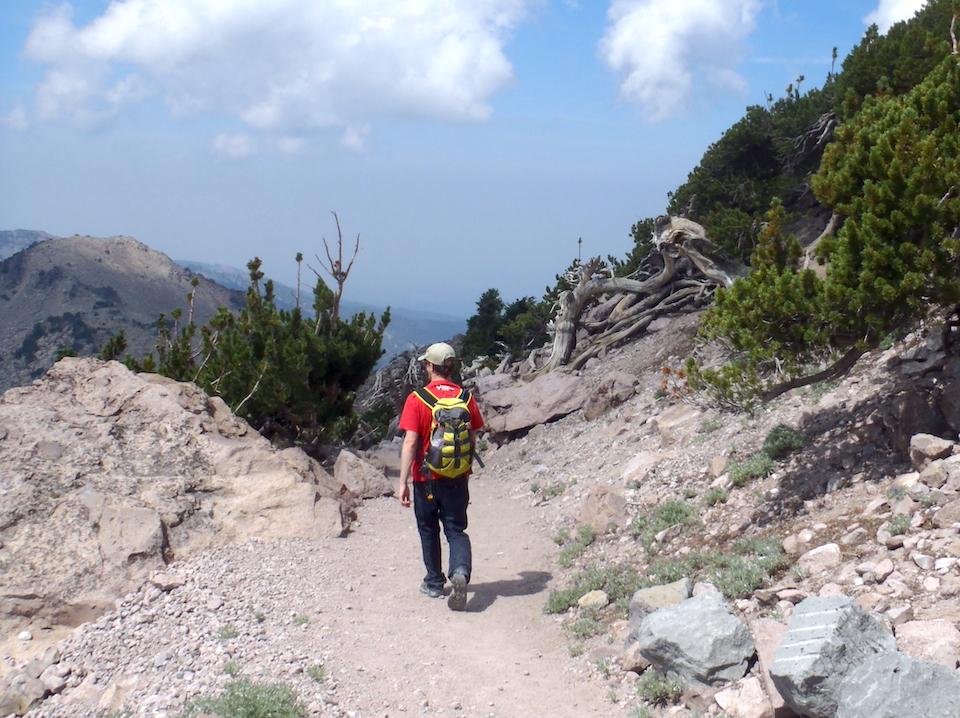
There's a hefty economic value to getting outdoors in national parks and other protected areas when it comes to mental healthcare/Kurt Repanshek file
It's often noted that getting out into nature is good for the soul, both from physical and mental health standpoints. A team of researchers in Australia has put a dollar figure on the mental health benefits, saying that protected areas such as national parks around the world provide $6 trillion in benefits.
"Nature exposure improves human mental health and wellbeing. Poor mental health imposes major costs on human economies. Therefore, parks have an additional economic value through the mental health of visitors," they write in the abstract to their paper, Economic Value of Protected Areas Via Visitor Mental Health.
Richard Louv, a journalist and co-founder of the Children & Nature Network, long has old us through his books about the value of being out in nature. In one of his titles he came up with the phrase, Nature Deficit Disorder.
In the United States, more and more doctors are appreciating the value of the outdoors to personal health through a growing movement called Park Rx (or Park Prescriptions) and are "prescribing" time outdoors for their patients.
In today’s world, kids spend more than seven hours per day on some type of screened device, compared to a mere seven minutes in unstructured outdoor play. These numbers are having a profound effect on children’s physical and mental health. Time spent being active outdoors has been shown to improve issues ranging from obesity to ADHD.
The Kids in Parks program of the Blue Ridge Parkway Foundation is supporting this movement to improve the overall well-being of children with its TRACK Rx program, which connects doctors to its nationwide network of trails designed to engage families with public outdoor spaces near them.
Ralf Buckley, a professor at Griffith University in Australia, and his team examined the mental health benefits of being in nature and placed a dollar figure on them. They did so by calculating what they call "quality-adjusted life years," which measured a person’s ability to carry out the activities of daily life free from pain and mental disturbance,
Buckley and his team of ecologists, psychologists, and economists maintain that, "(H)uman economies have underinvested severely in nature conservation, despite the high value of ecosystem services, because these services have been provided free of charge." The value of nature in protected areas to personal health "already exists, since the costs of poor mental health would increase if protected areas ceased to exist, or if people could no longer visit them."
Raising the economic value of protected areas to mental health could lead to better protection of those areas, maintains Buckley.
“Protected areas are there for conservation, which gives us a liveable planet and underpins our entire economy, but conservation is not very powerful politically," he said. "People and politicians pay more attention to health, because it affects them personally.”
Of course, once that value gains appreciation, there could be moves to corner it.
"As private enterprises and public healthcare agencies perceive mental health opportunities from people visiting protected areas, however, they will try to gain control over access, as an opportunity for profit. This is already a global concern in tourism, where entrepreneurs and industry associations constantly lobby for exclusive controls and development opportunities within public protected areas," they write.
"There is the same risk for healthcare enterprises, which may combine forces with tourism. Commercial interests in protected area management increase environmental impacts and decrease social equity. Economically disadvantaged individuals in developed nations, and many citizens in developing nations, already face barriers to visiting protected areas. In developing conservation policy to incorporate health services value, therefore, social equity should also be considered."
The researchers also caution that, if "nature therapies become widespread," governments that manage protected areas might raise fees to deal with increased visitation. "These may introduce equity issues, if individuals who gain most from visiting parks, currently free or cheaply, become unable to afford visits," they write.
Moving forward, healthcare insurers will need to come up with "diagnosable, prescriptible, insurable, and deliverable courses of outdoor nature-based mental health therapy, as a routine component of mainstream medical care."
The researchers did not break down that $6 trillion figure by country, something Buckley said he hopes to tackle in the future.
Working with Buckley on the research were Professor Paula Brough, Professor Chris Fleming, Associate Professor Neil Harris, Dr Ali Chauvenet, Leah Hague, Elisha Roche and Dr Ernesta Sofija.



Comments
These places are ours. No one should be allowed to make a profit off of it by charging us to visit our own land, our own heritage. However, we have to support parks with adequate tax dollars, which we have not done.